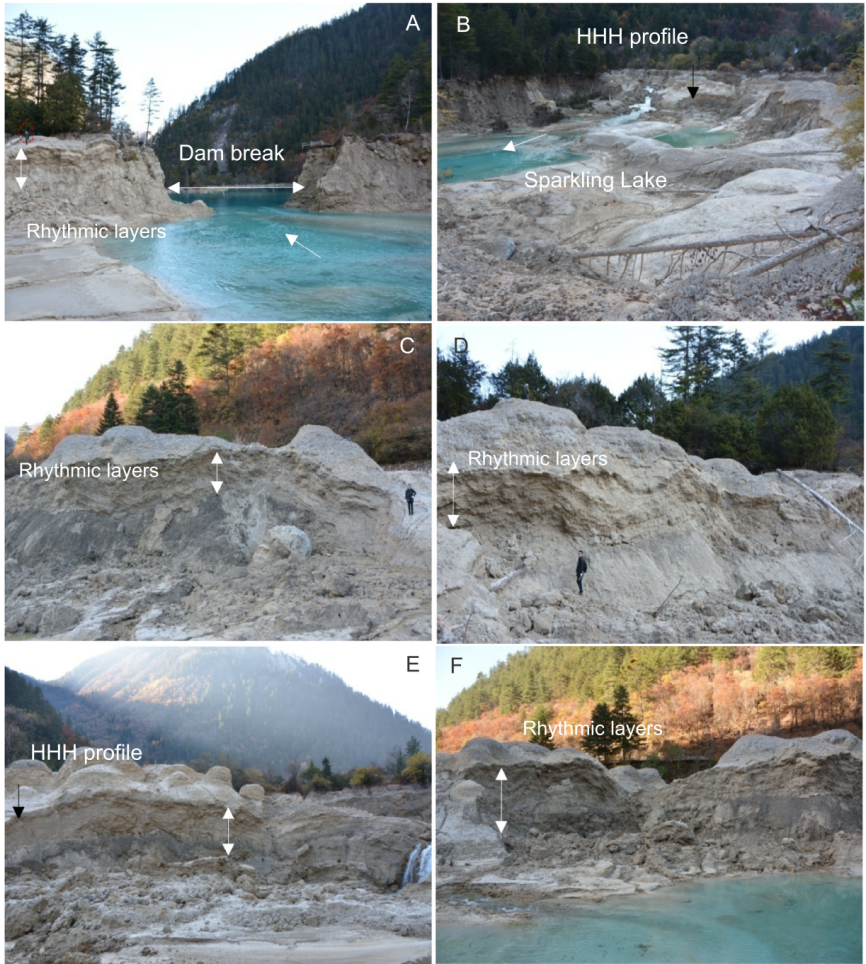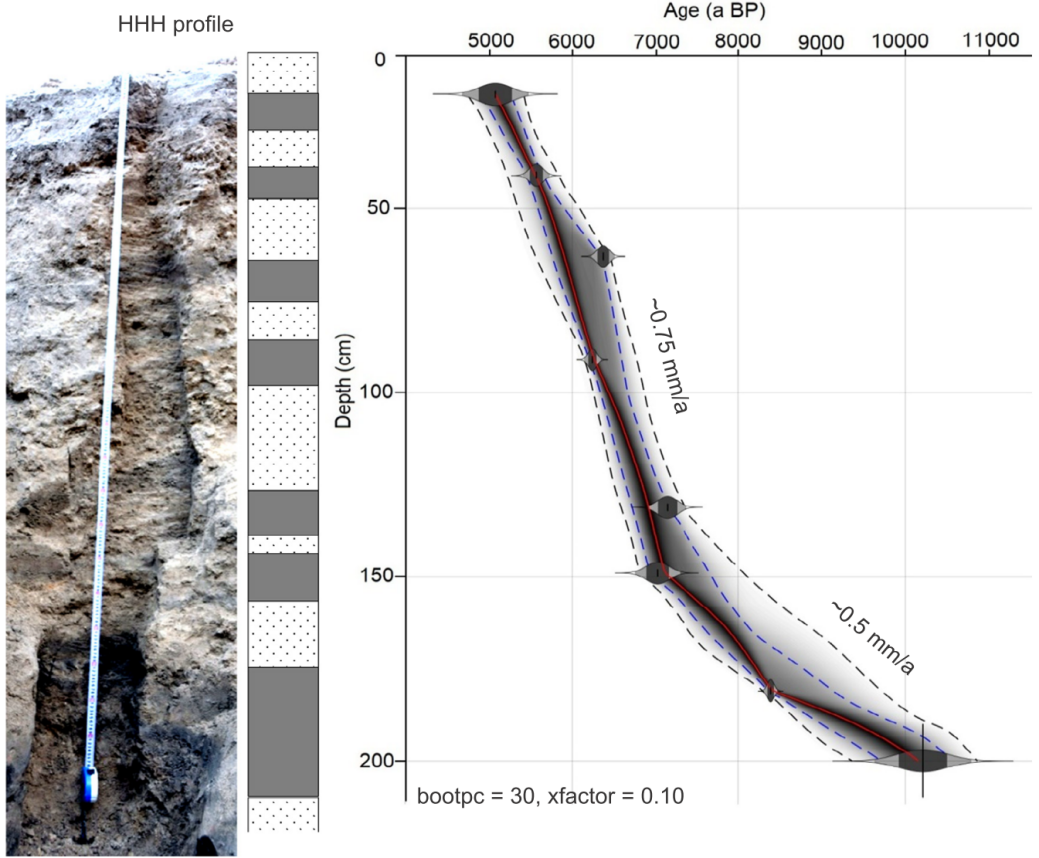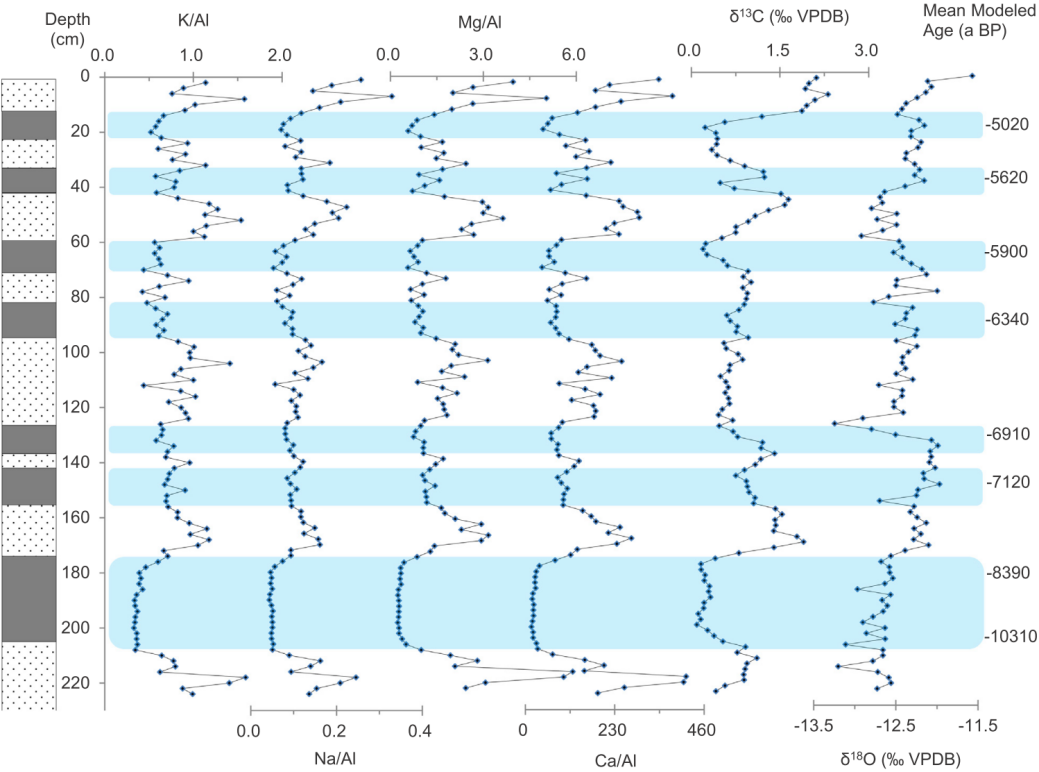A research team of Prof. GE Yonggang from Institute of Mountain Hazard and Environment, Chinese Academy of Sciences (IMHE-CAS), conducted a detail field surveys to reconstruct hydroclimate change recorded in tufa deposits of Sparkling Lake in the Jiuzhaigou gully. This team distinguished seven “dirty tufa layers” that are characterized by quartz-rich sediments, high kaolinite and high K, Na and Al. Compared with clean tufa deposits, dirty components in the tufa deposits were a result of surface soil erosion activity during strong monsoon rainfall periods within the catchment.
The chronology of tufa deposits is established by using radiocarbon (14C) dating of organic material from the dirty tufa layers. Seven flood-rich periods and eight flood-poor periods during the early and mid-Holocene were recorded by the dirty tufa layers interbedded with clean tufa layers in the Jiuzhaigou gully. The tufa records are more sensitive response to regional hydroclimate change, in comparison with the peat, lake sediments and stalagmite records. The low values of δ18O and δ13C in the dirty tufa layers indicate the flood-rich periods (10310-8390, 7120, 6910, 6340, 5900, 5620, 5020 a BP) were mainly triggered by strong monsoon rainfall events during early and mid-Holocene. Considering the chronological uncertainties and sampling resolution, some other abrupt climate events (i.e, 8200 a BP and 5500 a BP) may be also recorded in the tufa deposits. These results greatly improve our understanding of hydroclimate change in the eastern Tibetan Plateau during the early and mid-Holocene.
This research was supported by Strategic Priority Research Program of the Chinese Academy of Science (Grant NO. XDA23090203), The Second Tibetan Plateau Scientific Expedition and Research program (Grant No. 2019QZKK0902), National Science Foundation of China (41801012). The research titled Early and mid-Holocene hydroclimate change recorded in tufa deposits in the Jiuzhaigou gully, eastern Tibetan Plateau has been published online in CTENA.

Figure 1. Rhythmic layers of tufa deposits in the Sparkling Lake after the 2017 earthquake (Imaged by GUO Yongqiang).

Figure 2. Age-depth profile of the Huohuahai (HHH) profile with age data and estimated sedimentation rates. The thick red line indicates the best model based on the weighted mean ages within the 95% con?dence interval (Imaged by GUO Yongqiang).

Figure 3 Peak values of major elements ratios (K/Al, Na/Al, Ca/Al, Mg/Al), and δ13C of the tufa deposits correspond to clean tufa layers in the Huohuahai (HHH) profile, which are not correlated with δ18O variability. The dirty tufa layers were marked by blue bands (Imaged by GUO Yongqiang).
Contact:
Prof. GE Yonggang
Institute of Mountain Hazards and Environment, Chinese Academy of Sciences
Chengdu, Sichuan, 610041, China
Tel: 86-13458696758
E-mail: gyg@imde.ac.cn
